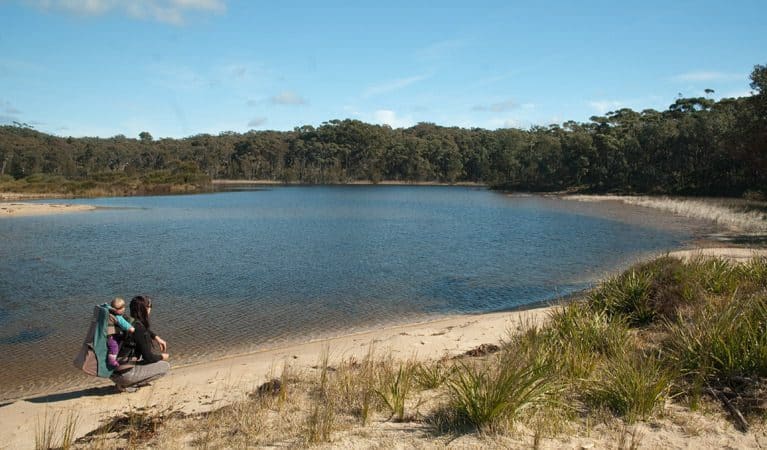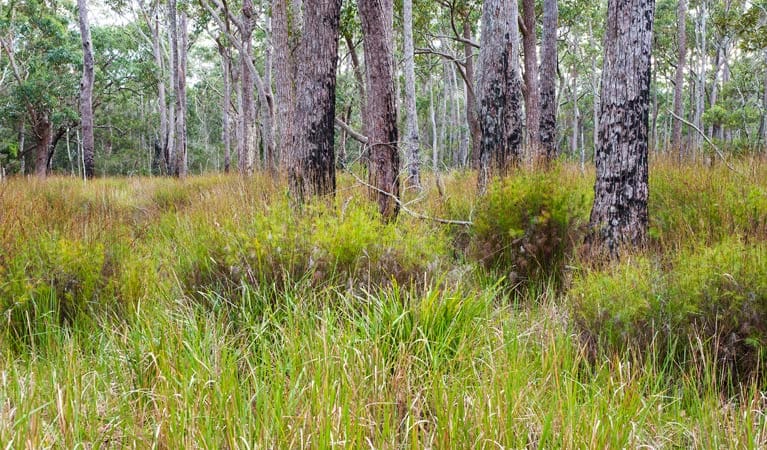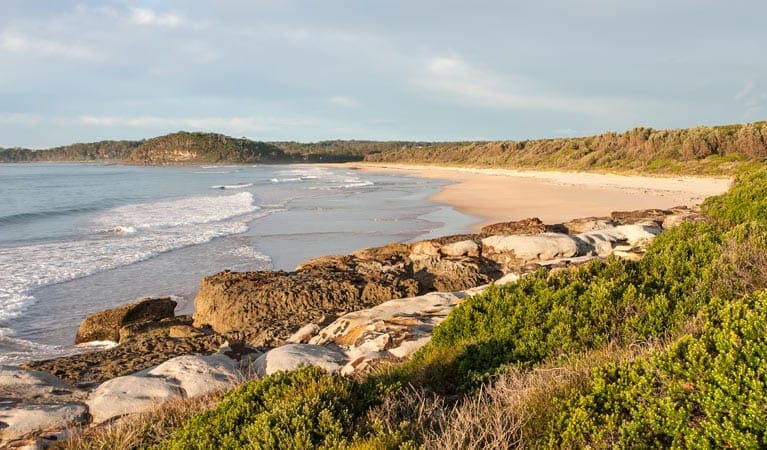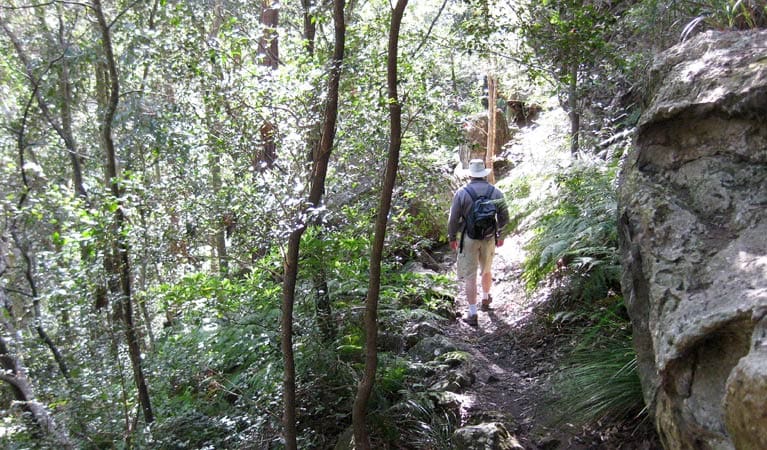Hike at a Glance
Max elevation: 0m
Min elevation: 0m
Total Ascent: 0m
Hike overview
White Sands walk and Scribbly Gum track are interconnected walking tracks which loop through scenic Jervis Bay National Park.
Start White Sands walk at Greenfield Beach picnic area, or if you'd like a longer walk, you can start from Plantation Point to the north. From Greenfield Beach the track heads south along Jervis Bay, passing the white sands and clear water of Chinamans Beach. Remember to bring your swimsuit if you fancy a quick dip along the way.
You'll be treated to incredible water views at various points along the track, which is a top spot for bird watching and glimpsing dolphins. There are also plenty of scenic detours along the way. From Chinamans Beach, you can walk to Cyrus Street and head through Hyams Beach town to reach its famous beach. The return leg along Scribbly Gum track takes you away from the coastline, through tall coastal forest and woodland, finishing up at the top of Greenfield Beach picnic area. If you're lucky, you might spy some furry locals including possums and gliders. Take a virtual tour of White Sands walk and Scribbly Gum track captured with Google Street View Trekker.
Tips
Both tracks are easy but you'll find the Scribbly Gum track steeper with more steps.
If you'd like a slightly longer walk, try the path that goes from Chinamans Beach to Cyrus Street, which leads you to nearby Hyams Beach.
There's also a council walking track north from Greenfield Beach that goes to Plantation Point via Blenheim Beach, and has several lookouts along the way. It makes a good extension to the national park tracks.
Visit NSW National Parks and Wildlife Service for more information on this trail.
The longitude and latitude of the start and end points are approximately only and should not be used for navigation purposes. Please contact me if you know the correct coordinates.
Gallery
Got some great shots from this hike? Upload your photos here to inspire others and show off the beauty of the trail!
Click to view form >>
Submitting your photos doesn’t mean you lose ownership. You can be credited for your contributions, and you can request removal at any time.
Content use
Please don’t copy GPX files or content from this site to AllTrails or other platforms. Each trail has been personally mapped, documented, and refined to support Australia’s bushwalking and hiking community. While some details come from land managers, every listing reflects significant personal effort. This is a free, community-driven initiative—your respect helps keep it that way.
Walk map and GPX file
It looks like I don’t have a GPX file for this trail yet. If you have one to share, please email it to me! I’ll verify it against official maps before adding it to help other hikers have a safer, easier experience. Thanks for contributing to a better hiking resource.
Getting there
Getting to the trailhead: Jervis Bay National Park.
To Chinamans Beach access. White Sands walk starts at Greenfield Beach picnic area. Pedestrian access to the picnic area opens directly off the cul-de-sac at the end of Elizabeth Drive, Vincentia.From the Princes Highway, take the Jervis Bay Road turn-off and follow signs to VincentiaFollow Elizabeth Drive to the cul-de-sac at its end – there are parking bays along the road Park entry points Chinamans Beach access See on map Parking Parking is available on Elizabeth Drive, a short walk from Greenfield Beach picnic area.
Closest towns to this walk: Callala Bay, Erowal Bay, Huskisson, Hyams Beach, Sanctuary Point, Vincentia
About the region
Explore the natural beauty of Jervis Bay National Park on NSW's sparkling South Coast, near Nowra. Discover Aboriginal heritage, visit Hyams Beach, renowned for its white sand, whale watching and water activities.
Similar walks nearby
Looking for more walks in or near Jervis Bay National Park? Try these trails with a similar difficulty grade.
Track grade
Grade 3 (Moderate) - Walks for Most Fitness Levels: Grade 3 on the AWTGS represents moderate walking tracks. These are ideal for walkers with some fitness who are comfortable with some hills and uneven terrain. While suitable for most ages, some bushwalking experience is recommended to ensure a safe and enjoyable experience. Tracks may have short, steep hill sections, a rough surface, and many steps. The total distance of a Grade 3 walk can be up to 20 kilometers.
Explore safe
Plan ahead and hike safely! Carry enough water, pack layers for changing conditions, and bring safety gear like a torch, PLB, and reliable communication device. Check official sources for trail updates, closures, and access requirements, and review local weather and bushfire advice. Most importantly, share your plans with someone before you go. Being prepared makes for a safer and more enjoyable hike! Stay Safe, Explore More, and Always #ExploreSafe.
Packing checklists
What you carry in your pack depends on factors like weather, terrain, and your adventure type. Not sure what to bring? My free planning, food, and packing checklists are a great starting point, covering day hikes, overnight trips, and multi-day adventures. Use them to customise your kit and always prioritise safety.
Let someone know
Before heading out, take a moment to fill out your trip intentions form. It’s a quick way to share your hike details with family or friends. If something goes wrong, they can notify emergency services, ensuring a faster response and peace of mind. Stay safe and enjoy your adventure
Suggest an edit
Spotted a change on this trail? Maybe there are new features, the route has shifted, or the trail is permanently closed. Whatever the update, I’d love your input. Your feedback helps fellow hikers stay informed and ensures that our trail info stays fresh and reliable.
Acknowledgement of Country
Trail Hiking Australia acknowledges the Traditional Owners of the lands on which we hike and pay respects to their Elders, past and present, and we acknowledge the First Nations people of other communities who may be here today.






